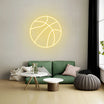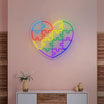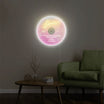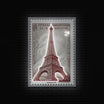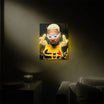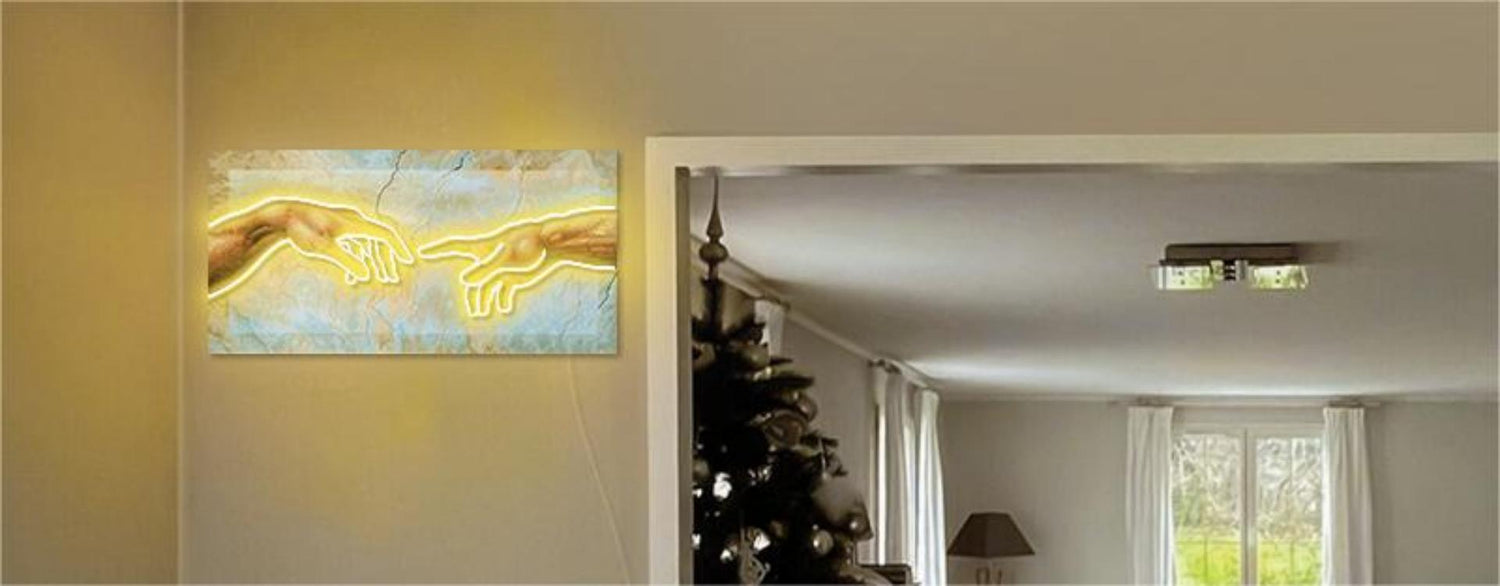Neon signs have long been a popular method of advertising, imbuing businesses with a distinctive allure and characteristic glow. However, while enticing and captivating, these glowing emblems of urban charm come with a heavier price tag compared to their non-illuminated counterparts. You might scratch your head wondering, why are neon signs so expensive? In this article, we will demystify the cost behind these flashy signage systems, highlighting how their fabrication process and benefits justify the investment. So, grab a seat and prepare to delve into the vibrant world of neon signs.
Why Are Neon Signs So Expensive?
Neon signs have been around for decades and are still incredibly popular today. However, they tend to be quite expensive, so many people are left wondering why they cost so much. The answer lies in the materials used to create them and the labor and skill required to make them.
Neon signs are typically made from glass, metal, and neon gas, all of which are expensive materials. The process of creating a neon sign is labor intensive and requires an experienced artisan, specialized tools, and a great deal of skill. The cost of the gas and other materials also adds to the cost of the sign, as does the cost of shipping and installation. Furthermore, the maintenance of a neon sign can also be costly due to the need to replace broken tubes or other parts.
Due to the high cost of purchasing them, many businesses choose to rent their neon signs rather than buy them. This allows them to take advantage of the beauty and appeal of neon signs without the hefty price tag. However, the true cost of a neon sign lies not just in the initial purchase price, but also in the cost of upkeep and maintenance.
For those looking to add a neon sign to their business, it is important to factor in all costs associated with it. While the initial cost may be expensive, the long-term benefits of having a beautiful and eye-catching neon sign may be worth the investment.
Breaking Down the Cost of Neon Signs
Peeling back the layers to understand why neon signs are expensive, we find a unique combination of factors contributing to their cost.
Creating neon signs is a labor-intensive process that involves bending glass tubes into specific shapes and filling them with gas.
The complexity of the design directly corresponds to the cost; the more intricate the design, the higher the price. The type of gas used, typically neon or argon, also adds to the cost. Furthermore, the longevity and durability of neon signs drive up their valuation, as they can brightly shine for a decade or more with little maintenance. From the craftsmanship involved in production to their impactful presence and durability, it's clear why the investment in a neon sign can be significant.
Factors That Contribute to the High Cost of Neon Signs
Neon signs, with their luminescent allure, come at a premium. This isn't purely by design but a direct reflection of the investment behind their creation. Consequently, neon artisans find themselves compelled to offset these steep component costs, inevitably elevating the price for end consumers. Beyond mere acquisition, the stewardship of these materials demands a separate financial commitment.
Glass, a quintessential component, demands an orchestra of care and workforce during transit. Diving deeper into the list:
Lead glass tubes spearhead the component ensemble. Far from mundane, these tubes, malleable yet steadfast against intense heat, can be twisted and turned into an array of captivating designs.
Enter the transformer – the lifeblood behind the glowing facades. Beyond its primary function, it's encased with precision, ensuring the internal circuitry remains unscathed from nature's unpredictable temperaments like tempestuous showers, icy snow, or invasive critters.
Electrodes serve as the vital veins, channeling the transformer's current to the gas-infused tubes. Their charge stimulates the gas molecules, birthing the mesmerizing light show.
The crowning component? Undoubtedly, the noble gases. For neon craftsmen, purity is paramount. Any adulteration can translate to subdued luminosity or an unwarranted spectrum of colors.
High Production Costs
Upon amassing the requisite elements, the symphony of neon sign construction commences. Notably more elaborate than its signage counterparts, neon fabrication is an artistry of its own. It starts with the lead glass tubes, which undergo an elegant ballet of heating, sculpting, and tempering to capture envisioned designs. Subsequently, electrodes find their home within these artful tubes, awaiting the embrace of neon gas.
With this intricate tableau laid out, what then is the financial toll for crafting such a luminous marvel? The calculus of neon sign costs isn't monolithic. Each meticulous step enlists expert hands and consumes valuable hours. Beyond the tangible material and skilled labor investments, there's the inexorable drain of utilities to consider. The cumulative weight of these expenditures is substantive. While mammoth establishments might leverage economies of scale to temper costs, the mitigation remains modest.
Choice of Design
Undoubtedly, grandeur and intricate designs in neon amplify its visual eloquence. Yet, as the design's flamboyance escalates, so does its complexity and ensuing labor. Hence, a resplendent, expansive neon piece demands a proportionate monetary tribute, especially when juxtaposed against its modest, diminutive counterparts. Dabble in intricate chromatic flourishes, and the financial ledger tilts further, given the sophistication required for their realization.
Delving into the offerings of neon craftsmen, two primary avenues emerge: prefabricated illuminations and bespoke masterpieces. The former, churned out in voluminous batches, benefits from a replicable blueprint and streamlined manufacturing, thereby extending cost efficiencies to the purchaser. In stark contrast, the tailored illuminations, singular in their essence, lack the protective buffer of mass production. Their exclusive templates and individualized crafting process inherently command a premium, reflecting their absence of scale economies and distinct uniqueness.
Value
In the commercial arena, "value" and "price" aren't merely distinct terminologies; they're interwoven tapestries of commerce. While "price" quantifies the monetary exchange for a neon sign, "value" encapsulates the myriad advantages and experiences the sign confers. In scenarios where the intrinsic worth of a commodity is augmented, it's almost axiomatic that its price will mirror this elevated stature.
Taking neon signs as illustrative beacons, their ascendancy in the advertising and architectural embellishment domains has bolstered both their demand and inherent value. This amplified reverence nudged their price bracket upwards. Conversely, had their allure stagnated or diminished, the financial metrics would likely have held a more conservative stance.
BUDGET-CONSCIOUS NEON ENLIGHTENMENT: MYTH OR REALITY?
Certainly! There exist pragmatic avenues for those wishing to harness the allure of neon without straining their coffers. Though these strategies may not halve your expenditure, shaving off even a modicum could prove beneficial. Here are some economic maneuvers to ponder.
Scale down to petite or moderate neon illuminations. If your aspiration veers towards neon's radiant allure, gravitate towards more compact or intermediate designs. Ensuring luminosity and strategic elevation can endow these diminutive signs with an impact rivalling their grander counterparts, with the added boon of lighter financial obligations.
Embrace off-the-shelf luminaries. Termed as ready-to-deploy neon signs, these creations tread the path of affordability in contrast to their tailor-made kin. Moreover, their immediate availability expedites the process of illuminating your space.
Are Neon Signs Expensive to Run?
Navigating the neon territory, one often wonders about its operational expenses. Notably, exterior neon illuminations come with a steeper maintenance curve compared to their indoor counterparts. Exposed to the caprices of nature and the occasional misadventures of pedestrians, they bear the brunt of potential defacement or unwarranted interventions. The miniscule marauders, like soil mites, too, pose an insidious threat. Add the wrath of tempestuous downpours or blanketing snow, and the sign's well-being is further compromised.
In the realm of upkeep, neon signs do not brandish a one-size-fits-all price tag. Yet, preserving their pristine glow can drill a deep hole in one's pocket. Technicians, entrusted with their care, must intertwine dexterity with utmost vigilance to avert shattering the delicate glass conduits. Moreover, contact with the ensconced gas, especially in vintage pieces housing mercury, poses significant health risks.
Are There Alternatives to Traditional Neon Signs?
Indeed, innovations have paved the path to alternatives. For those yearning for the classic neon allure without its accompanying fiscal demands, LED neon illuminations offer a compelling solution. To the untrained eye, these modern marvels mirror the charm of their time-honored counterparts. Yet, the discerning ledger will sing praises for their cost-efficacy.
LED Neon Signs
LED neon illuminations take form by meticulously arranging LED neon flex radiance upon a foundational board. Thanks to their encapsulation in pliable silicone sheaths, these radiant bands effortlessly twist and curve, morphing into an array of designs and alphabetic representations. Guided by a masterful template, artisans achieve this with relative ease, rendering the fabrication of LED neon displays not just cost-efficient, but also favorably priced for the discerning consumer.
Should the investment in a bespoke LED neon creation exceed your fiscal parameters, fear not! The realm of self-creation beckons. This endeavor, devoid of treacherous gases or delicate components, welcomes even the uninitiated. However, embarking on this luminous journey mandates a keen eye on instructional visuals, a voracious appetite for enlightening literature on the craft, and an unwavering adherence to safety norms.
FAQs
Is the Operational Cost of LED Neon Signs More Economical?
Delving into the realm of LED neon, one discovers their exquisite craftsmanship, enveloped in top-tier insulation. This makes them stalwart champions, both internally and externally, exuding brilliance attributed to their elevated Ingress Protection gradations. Consequently, the aftermath is clear: LED neon displays demand nominal upkeep, resulting in fiscal savings that span both immediate and protracted durations.
Does the Merit of LED Neon Signs Rival Traditional Neon Displays?
Venturing into the spectrum of LED neon aesthetics, a myriad of hues emerges, thanks to the RGB or RGBW LED neon flex luminaries. Elevate the experience further with an RGB LED orchestrator, allowing for color metamorphosis at your fingertips, potentially crowning your insignia as the pièce de résistance in your vicinity.
LED neon boasts other virtues, encapsulating:
- A green thumb, with reduced energy appetite.
- Tenacity against life's mishaps, minimizing fragility.
- Uniformity in radiance, ensuring consistency.
- Unfettered creativity, unbound by size or silhouette constraints.
Wrapping It Up
Neon signs, akin to the allure of vintage automobiles, encapsulate an era of sublime design and timeless elegance. Yet, just as these classic beauties might falter amidst today's fast-paced lanes, neon signs too grapple with contemporary challenges. Their production intricacies and upkeep demands come with a steeper price tag. However, with a deeper insight into their cost composition, one can't help but revere the artistry and history they represent. The world may move fast, but there's an undeniable appeal in pausing to appreciate the glow of yesteryears.




